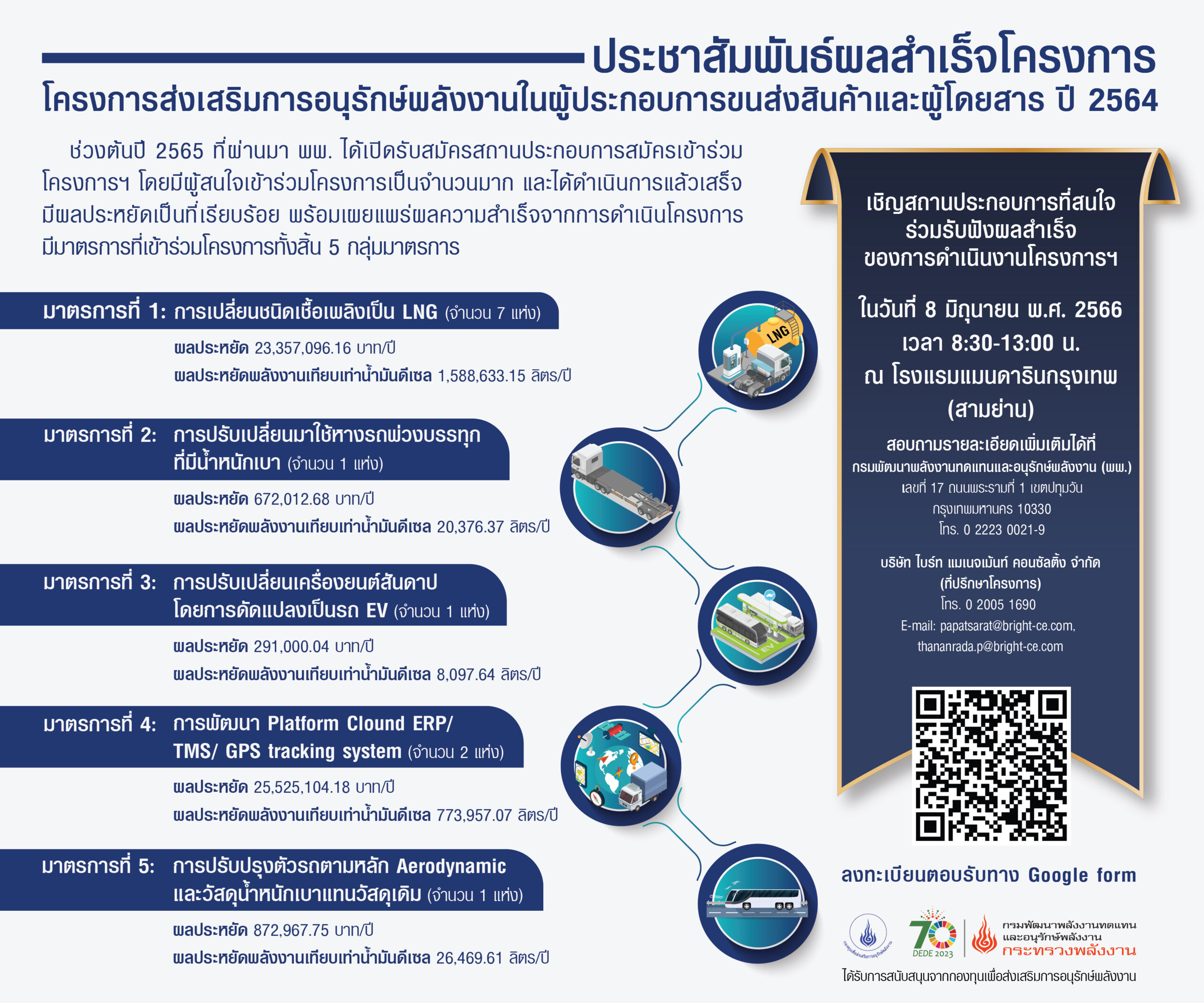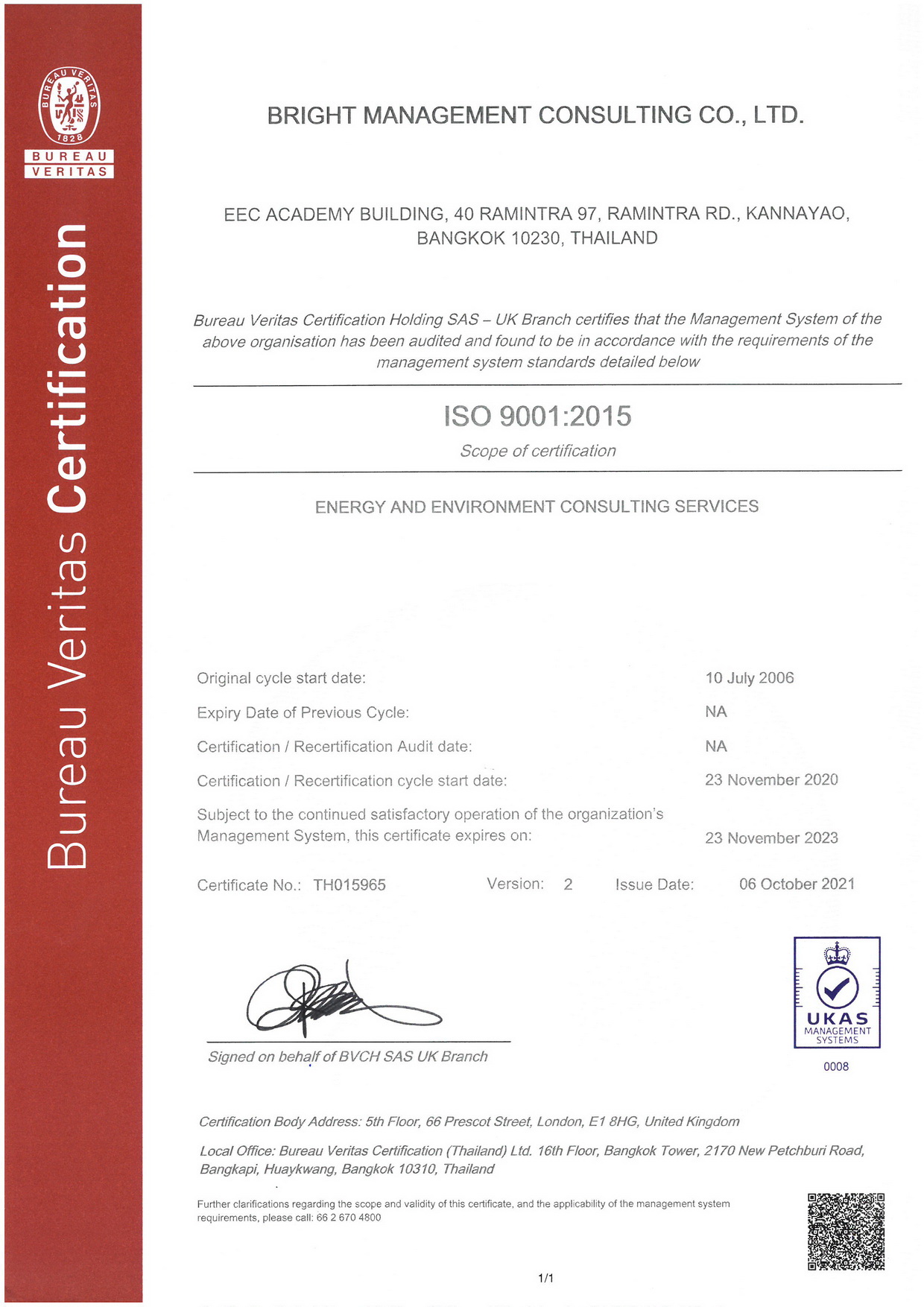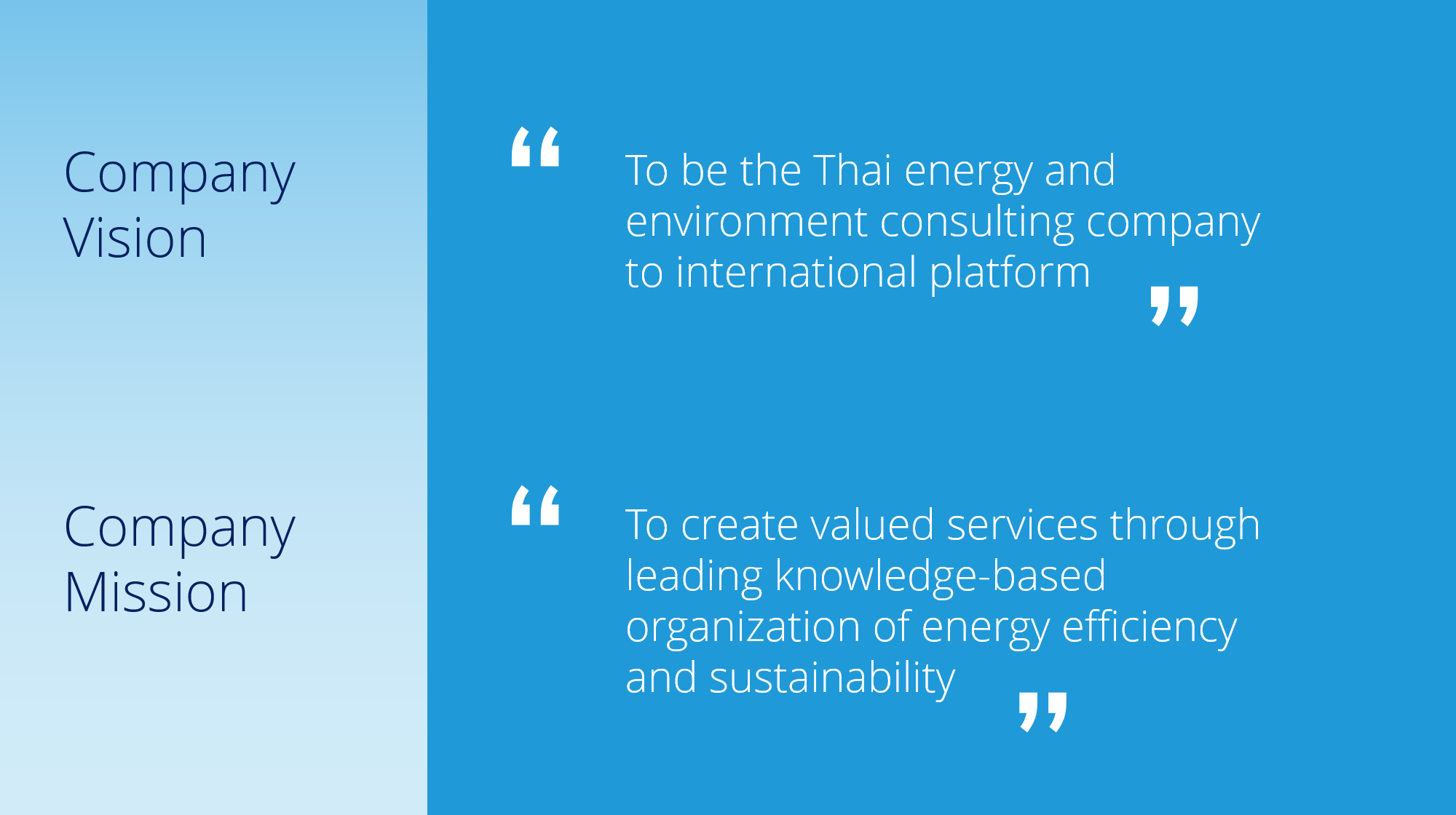Greenhouse Gas inventory & Management
Greenhouse Gas inventory & Management are the areas related to glocal warming and climate change issues. The public and private sector are recently aware of the importance of development GHG inventory and contribution to GHG reduction through the implementations of greenhouse gas policies, technologies, and green financing under international agreements and supports. Bright Management Consulting Co.,Ltd. holds expertise and capable of providing the high quality of study in compliance with international standards to its clients for their greenhouse gas development and strategies.
Our Services Coverage
- Develop greenhouse gas inventory and carbon footprint at different levels i.e. national, city, and corporate to capture the hotspots of emissions for all sectors in compliance with national and international standards and protocols
- Propose and recommend the most potenital and effective policies and measures that can achieve long-term greenhouse gas mitigation goals
- Develop the low emissions strategies to cut greenhouse gas emissions to achieve the set targets toward to carbon neutrality and net zero
- Develop Monitoring and Evaluation (M&E) and MRV system or tools to track the progress of greenhouse emissions
- Develop the projects for carbon credits under national or international mechanism i.e. T-VER, CDM, JCM
Sector Coverage
- Residential
- Commercial
- Industrial sector
- Agriculture and forestry
- Waste
Project Highlights and Achievement
Greenhouse Gas Data Compilation and Inventory from 5 Sectors during 2000-2015 for Thailand Greenhouse Gas Emissions Inventory System (TGEIS), ONEP: the government project from Office of Natural Resources and Environment Policy and Planning – a national focal point of all sectors for national inventory reporting. Under the project framework, the national inventory has been systemmatically compiled in TGEIS. The calculation of emissions had been reviewed in transition of using Guideline of Revised IPCC1996 to IPCC2006. The activity data for all sectors i.e. Energy, IPPU, Agriculture, Forestry and Land Uuse, and Waste, had been validated with focal points and recalculated.
Study on GHG emission and identify potential GHG emission reduction. Develop Local GHG Abatement Plans in 8 municipalities (Region 3) Develop GHG abatement plan guideline that include environmental and social management framework (ESMF); TGO sponsored by World Bank: the project included the prepared and developed a guideline for city level carbon footprint in compliance with international guideline “Global Protocol for Community-Scale Greenhouse Gas Emission Inventories”, as well as guidelines for abatement planning and project evaluation. The developed guidelines had been used for developing all participating municipalities total of 25 municipalities. Under the project scope, the study city carbon footprints of nine (9) municipalities had been evaluated for their current emissions and long term emissions projection, Then the GHG reduction measures had been identified, proposed, selected and planned through stakeholders’ consultations.
Project Reference
Project
Owner
Year
Technical advice and cooperation for NACAG
GIZ Thailand
2022
Analysis of Thailand’s Commercial Refrigeration and Air-Conditioning (AC) Service Sector
GIZ Thailand
2022
Interviews TGCP main partner on MRV/M&E context of reporting
GIZ Thailand
2022
Carbon Footprint of Organization Development
Bumrungrad Hospital Public Company Limited
2022
Supporting CAPCI Activities in Thailand
GIZ Thailand
2021
Technical Review of Handing-over Documents and Protocols for the Project MRV System
GIZ Office Bangkok
2021
Project on Tracking and Reporting Greenhouse Gas Reduction in the Industrial Sector
Department of Industrial Works
2021
Project on Strengthening Capacity Building and Support for Greenhouse Gas Reduction Measures in Industrial Sector
Department of Industrial Works
2020
Project on Data Analysis and Preparation of Technical recommendations from the IPCC Special Report to be a Guideline for Policy Setting and Climate Change Knowledge Dissemination
Office of Natural Resources and Environmental Policy and Planning
2020
Greenhouse Gas Data Compilation and Inventory from 5 Sectors during 2000-2015 for Thailand Greenhouse Gas Emissions Inventory System: TGEIS
Office of Natural Resources and Environmental Policy and Planning
2019
Collaborative Program for Implementation of the Convention and the International Protocol on Environment, Safety, Chemicals, Industrial Hazardous Substances in Industrial Sector
Department of Industrial Works
2018
Study on GHG emission and identify potential GHG emission reduction. Develop Local GHG Abatement Plans in 8 municipalities (Region 3). Develop GHG Abatement plan guideline that include environmental and social management framework (ESMF)
Thailand Greenhouse Gas Management Organization (Public Organization)
2017
Greenhouse Gas Data Management for industrial Sector Year 1
Department of Industrial Works
2017
The Accounting of Greenhouse Gas Emissions in the Industrial Sector Phase 2. First Training Workshop for the Greenhouse Gas Inventory Preparation Government Personnel and Operators in the industry with high greenhouse gas emissions
Department of Industrial Works
2012
Establishing an inventory of F- and GHG gases stemming from use, maintenance, and disposal of appliances for refrigeration and air conditioning (RAC) in Thailand
GIZ Thailand
2012
Data collection support for establishing an inventory of consumption and emission of F-gases in Thailand
GIZ Thailand
2012
Collaboration to Promote HCFC Phase out in Asia and the Pacific Region
UNEP
2012
Greenhouse Gas Management Program for Industrial Sector (Sub-program 1) Greenhouse Gas Inventory for Factory
Department of Industrial Works
2010
Develop Project Design Document (PDD) for CDM fuel switching project
Thai Urethane Plastic Co., Ltd.
2006
Feasibility Study for CDM project development
Asian Palm Oil Co., Ltd.
2006
Feasibility Study for CDM project development for fuel switching project
Thai Urethane Plastic Co., Ltd.
2006
Feasibility Study for CDM project development
Kantana Group Public Company Limited
2006
Feasibility study for the establishment of a biodiesel production plant in Thailand
EC ASEAN Energy Facility
2005


